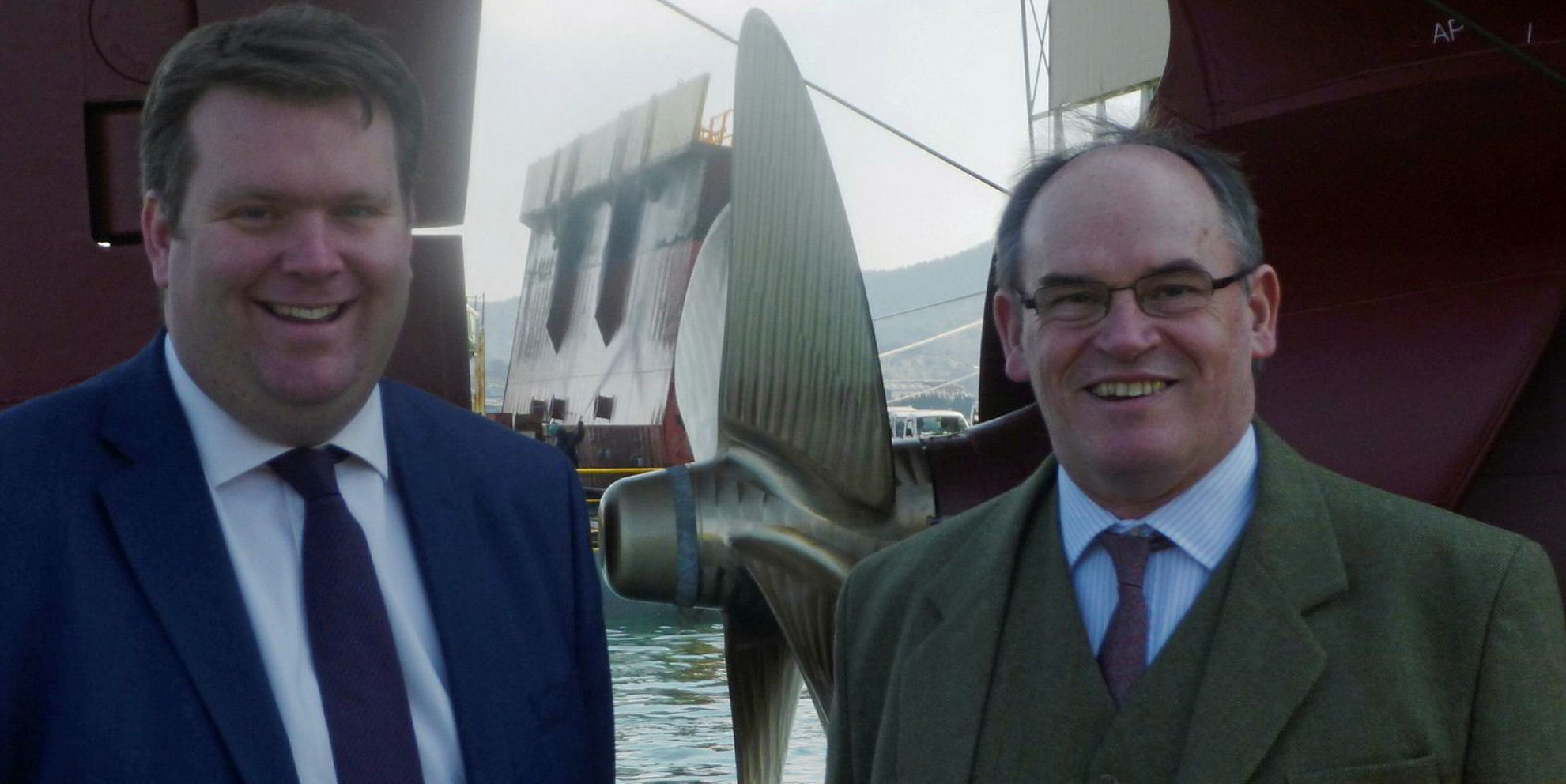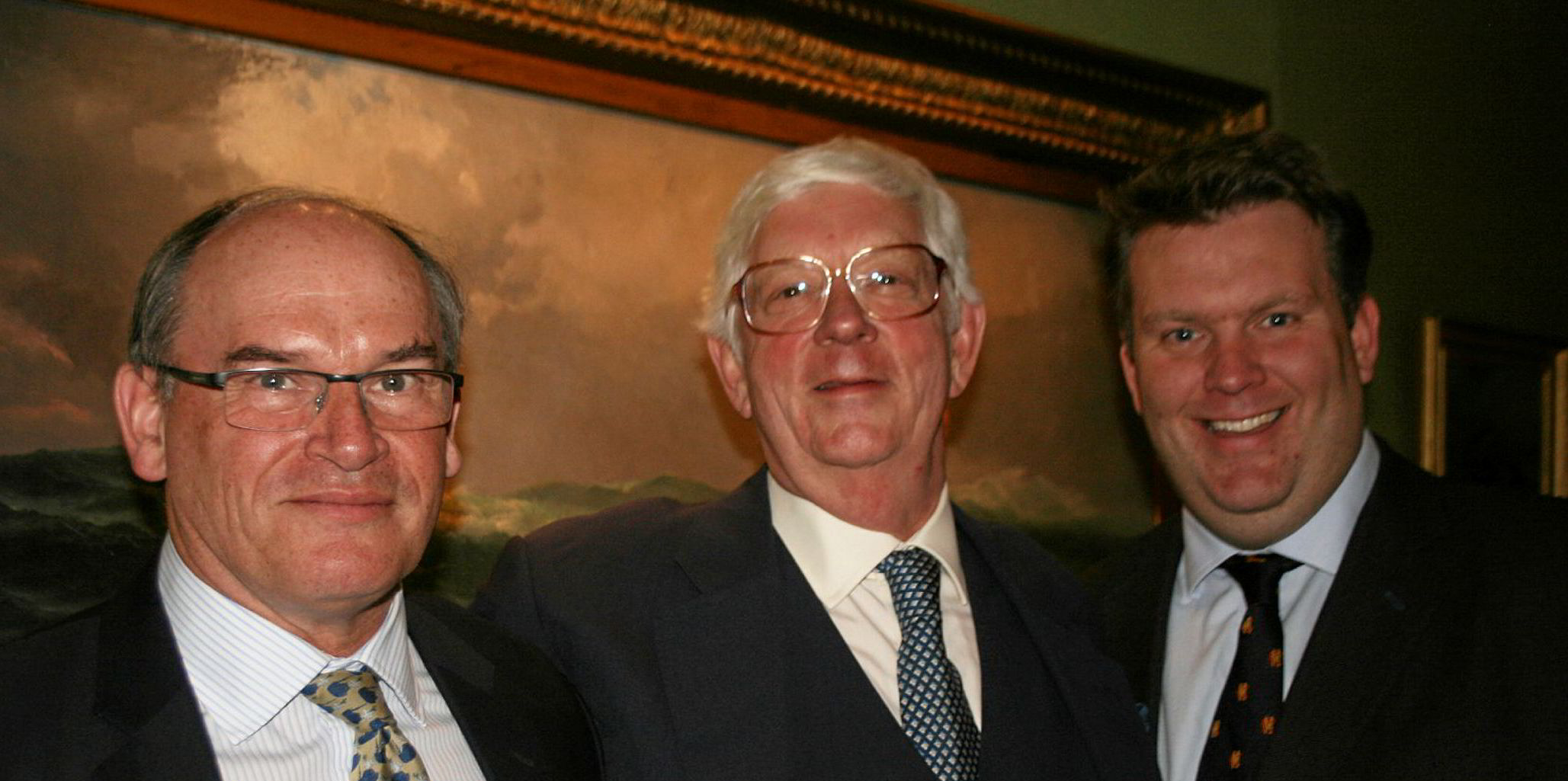When James Denholm began in business more than 150 years ago, wooden sailing vessels were the backbone of merchant shipping, with overseas trade underpinning Britain’s position as the world’s superpower.
Much has changed since then, but one constant has been the family behind what is today the Glasgow-based, widely diversified shipping, logistics, seafoods and industrial services group J&J Denholm.
Led today by John Denholm and employing directly about 1,200 people, the group is about to undergo a generation transition with the succession of Ben MacLehose, a great-great-grandson of the founder.
John is chief executive and chairman, but group managing director MacLehose is expected to take over as chief executive towards the end of next year.
New chapter
The move comes as J&J Denholm, a company steeped in its Scottish heritage, writes a new chapter in a history that has seen its Diamond D emblem grace the funnels of scores of ships as it grew to manage some of the largest vessels in the world.
At some point he decided I had the competence and has given me more and more opportunity to prove myself. He has been an extraordinary mentor, teacher and now a great friend
Ben MacLehose
At 63 years old, John will remain at the heart of the group as non-executive chairman but new external responsibilities will occupy more of his time.
In April, he took over as prime warden of the Worshipful Company of Shipwrights, an organisation whose original purpose 700 years ago was to safeguard the quality of shipbuilding in London.
Today, it fulfils a particularly philanthropic role donating to maritime-related causes, charities and companies.
John, a former president of Bimco, is also vice president of the UK Chamber of Shipping and next year is expected to succeed Sir Michael Bibby as its president.
“He [John] has built a mini-conglomerate and very successfully,” MacLehose says.
“At some point he decided I had the competence and has given me more and more opportunity to prove myself. He has been an extraordinary mentor, teacher and now a great friend.”
Many transformations
Evolution rather than revolution has been the J&J Denholm mantra as it transformed itself many times, since being founded in 1866, to meet the challenges of an ever-changing shipping environment.
The Diamond D, A Celebration of 150 years of J&J Denholm, published to mark that achievement in 2016, recounts many tough times for the group but also huge successes.
It depicts how an earlier John Denholm, younger brother of founder James, helped expand the original agency and broking business and in 1872 spotted for sale what was to become Denholm’s first ship — the 122-ton Brixham topsail schooner David Sinclair.
However, the bank manager apparently took one look at the 19-year-old John and showed him the door.
But outside, he met two local businessmen, a carpenter/chandler and a sailmaker, who offered to put up the cash for the £2,500 vessel.
The company’s career as a shipowner had begun.
Subsequently, J&J Denholm also moved into shipmanagement. Its milestones along the way included, in the 1950s, the legendary Norwegian-American Erling Naess transferring 14 vessels to J&J Denholm, transforming the company’s management business “overnight into a global player”.
A new-generation driving force at the time was Sir Ian Denholm, subsequently the fourth chairman of J&J Denholm and later considered the father of shipmanagement. He died last year aged 91.
'Phenomenal business'
By the time of Denholm Ship Management’s merger with Hong Kong’s Anglo-Eastern in 2001, the two players were handling full third-party management of between 150 and 180 vessels, which has since risen to more than 600 ships.
J&J Denholm remains a major shareholder manager Anglo-Eastern and John is a board member.
“It has been a huge success story,” MacLehose says. “The business they have built is phenomenal.”
J&J Denholm began diversifying in the 1980s and has continued ever since with fourth-generation chairman John at the helm.
“He has looked at the wealth tied up in the balance sheet and tried to spread the risk,” MacLehose says, a strategy he concedes runs contrary to what management consultants might advise.“They would say you need to focus on your core business, but they are missing the point,” he says. “It is about spreading the risk profile for our shareholders.”
- Shipping: Vessel ownership, the Hadley Shipping shareholding and broker Denholm Coates.
- Logistics: Ship agency, freight forwarding, warehousing, transport and shortsea shipping. It employs about 450 people, handles port agency of 6,000 ships each year and operates 1.5 million square feet of warehousing. Denholm Port Services is a joint venture with the Wilhelmsen group.
- Seafood: UK fish selling services, owns shares in 30 of 70 fishing boats it supports, and processes about 34,000 tonnes of herring and mackerel per year.
- Industrial services: Provides scaffold erection services and vessel painting and coating, including serving the oil and gas industry. Denholm Oilfield Services was demerged into a separate group in September 2015.
Those family stakeholders have a “period of stewardship of the shares and pass them on having enjoyed the revenue income from the dividends,” MacLehose says.
Apart from family members, 3% of the shares are still owned by descendants of the original ships’ captains dating back to when the masters of vessels were given a stake enabling them to negotiate backhaul cargoes.
Spreading risk
Spreading the risk has meant J&J Denholm today stands on four legs: shipping, logistics, seafood and industrial services.
As the company diversified to spread risk, and with it demands on capital from its different divisions, the size of its owned fleet fluctuated to the point that in 2013 it sold its last vessel, the 47,027-dwt Saga Andorinha (built 1998) .
This was the first time the company was without a ship since 1872.
But within a couple of years it bounced back with an order at Japan’s Naikai Zosen Corp for a pair of 37,500-dwt log-fitted bulkers — the Mountpark and Glenpark — for delivery in 2016 and 2017 at a cost of $28 million each.
Traditionally, J&J Denholm names its ships aer parks in the Scottish town of Greenock, the company’s original home base.
MacLehose was heavily involved in that newbuilding contract, although in an interview at the company’s London offices he described himself modestly as the chairman’s "junior gofer" in the project.
Moving with the times
Looking ahead, MacLehose says J&J Denholm would like to own more ships, maybe up to five, but it is not prepared to place all of its capital in shipowning.
It recently looked at a bringing a Hyundai Mipo Dockyard, 38,000-dwt tanker into a joint venture, backed by a blue-chip charter. Although that did not materialise, it is the type of project the company is interested in.
“If it is not broke, don’t fix it,” says MacLehose, when asked about his plans when he takes over as chief executive.

“But we also need to move with the times. We have businesses in different parts of their life cycle — those that need reinvestment, those that have real opportunity in front of them, some very mature and some less mature.”
He adds: “Shipping gives us dollar revenues and global macro-economic exposure, the logistics business is more UK focused, while seafoods is a completely different set of dynamics.
“John has put us in a place where we have overlapping but different drivers and I don’t see myself radically changing that.”

However, MacLehose says: “I would like to find another leg, another division replacing the [demerged] oilfield division.”
He also hints at possibly another shipping-services business to balance tonnage ownership.
But for J&J Denholm, the plan is to remain family owned, a structure that comes with “challenges but also huge positives”.
“We invest for the long term,” MacLehose says. “Our shareholders are looking for longevity, for the business to move on, and ultimately, if I succeed, I will be passing it on to someone else within my generation or the next.”
Founders James and John Denholm 153 years ago were just the first team of brothers in the family to feature in the growth of J&J Denholm.
Others have been Sir William "Willie" Denholm and Sir John "Jack" Denholm, who expanded the owned fleet during the interwar period, followed by Sir Ian and Bob Denholm, who expanded the shipmanagement side.
Chairman builds structure
The current chairman, John Denholm, is attributed with structuring the group along the lines of divisional management teams running individual groups of businesses in a given sector. Each company within the four divisions has its own board of directors.
Other family members in the business include Niall Denholm, head of Denholm Logisitics Group which includes agency Denholm Port Services. Duncan Brown heads up shipbroker Denholm Coates and Cara Denholm, one the chairman’s two daughters, is company secretary for the oilfield services business.
Shell man onboard
Former Shell shipping boss Jan Kopernicki sits on the J&J Denholm board.
Although the group has some long-serving senior executives from outside the family, John is said to keep an eye on potential talent within the Denholm clan.
But, says group managing director Ben MacLehose, family appointments depend on the candidate being equally qualified for a role.
“There is absolutely no right [to a position]," he says. “You have to earn it.”





